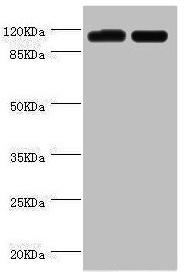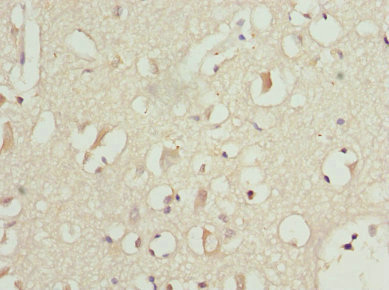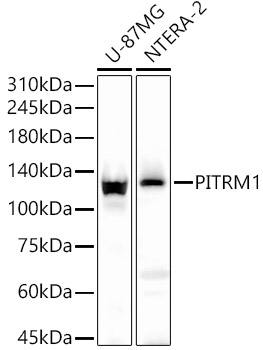
Western blot All lanes: PITRM1 antibody at 2microg/ml Lane 1: A549 whole cell lysate Lane 2: Mouse kidney tissue Secondary Goat polyclonal to rabbit IgG at 1/10000 dilution Predicted band size: 118, 107 kDa Observed band size: 118 kDa
PITRM1 Antibody
CSB-PA692283ESR1HU
ApplicationsWestern Blot, ELISA, ImmunoHistoChemistry
Product group Antibodies
ReactivityHuman, Mouse
TargetPITRM1
Overview
- SupplierCusabio
- Product NamePITRM1 Antibody
- Delivery Days Customer20
- ApplicationsWestern Blot, ELISA, ImmunoHistoChemistry
- CertificationResearch Use Only
- ClonalityPolyclonal
- ConjugateUnconjugated
- Gene ID10531
- Target namePITRM1
- Target descriptionpitrilysin metallopeptidase 1
- Target synonymsMP1, PreP, SCAR30, presequence protease, mitochondrial, PreP peptidasome, metalloprotease 1 (pitrilysin family), pitrilysin metalloproteinase 1
- HostRabbit
- IsotypeIgG
- Protein IDQ5JRX3
- Protein NamePresequence protease, mitochondrial
- Scientific DescriptionATP-independent protease that degrades mitochondrial transit peptides after their cleavage. Also degrades other unstructured peptides. Specific for peptides in the range of 10 to 65 residues. Able to degrade amyloid beta A4 (APP) protein when it accumulates in mitochondrion, suggesting a link with Alzheimer disease. Shows a preference for cleavage after small polar residues and before basic residues, but without any positional preference.
- ReactivityHuman, Mouse
- Storage Instruction-20°C or -80°C
- UNSPSC41116161





